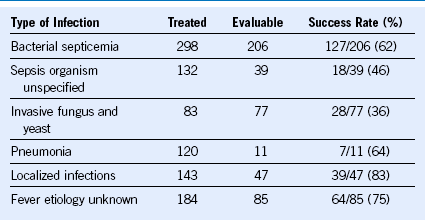Chapter 51 Principles of Neutrophil (Granulocyte) Transfusions
Table 51-1 Infectious Problems in Neutropenic Patients Treated With Historical Granulocyte Transfusions in 34 Studies

Chapter 51 Principles of Neutrophil (Granulocyte) Transfusions
Table 51-1 Infectious Problems in Neutropenic Patients Treated With Historical Granulocyte Transfusions in 34 Studies

